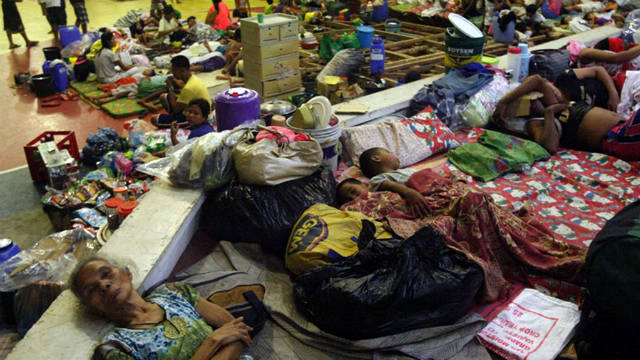SUMMARY
This is AI generated summarization, which may have errors. For context, always refer to the full article.

MANILA, Philippines – Typhoon Yolanda (international name: Haiyan) has made landfall on early Friday, November 8, and among the provinces bearing its wrath are some of the country’s poorest.
According to a study by the Ateneo de Manila’s Manila Observatory, the path of Yolanda’s destruction is close to Typhoon Pablo’s in 2012. It would hit areas with high poverty incidence, making the population more vulnerable to the destruction from the cyclone.
In their November 7 technical report, the research institute said that the provinces of Northern Samar, Masbate, Bohol, Negros Oriental, and Antique are most vulnerable because of their high poverty incidence.
Philippine data from 2006, 2009, and 2012 indicate that 40-50% of the population in Masbate, Northern Samar, and Bohol are considered poor. Masbate and Northern Samar are under storm signal number 4 as of state weather bureau PAGASA’s 11 pm bulletin on Thursday.
Bohol, a province still reeling from the effects of a magnitude 7.2 earthquake, is under storm signal number 3. The province scrambled to search for adequate evacuation centers as most infrastructure were damaged by the quake.
Read the report in full here:
Manila Observatory: Typhoon Haiyan Brief Technical Report (7 November, 2013)
Poverty in the provinces will affect not only disaster prevention measures, but relief and recovery as well, after Yolanda exits the Philippine Area of Responsibility by Saturday evening.
“Damage and losses could be very high in these provinces and could impede recovery efforts after the typhoon,” the report said.
Over 5 million people are living in the 10, mostly impoverished, provinces directly along Yolanda’s path. Some 54 million Filipinos live in the 40 provinces and cities affected by the storm.
Similar to Pablo
The report paints a picture similar to the destruction caused by Pablo: homes made of light materials crushed, and inferior infrastructure rendered helpless by Category 5 winds that packed a speed of up to 260 km/h. As of PAGASA’s November 7 evening bulletin, Yolanda registered gustiness of up to 260 kph.
The United States Navy’s Joint Typhoon Warning Center, however, pegged Yolanda’s gusts at 370 kph.
Also in the path of the storm are other provinces with high poverty incidence: Eastern Samar, Leyte, Romblon, Mindoro, Marinduque, Aklan, and the Bicol region.
Davao Oriental, which was severely hit by Pablo in 2012, had a high poverty incidence of about 47-55%. “Should Typhoon Yolanda maintain high winds speeds, homes made of light materials and in low-lying areas may be at high risk,” the report said.
Preparedness
The President himself warned local government units and citizens Thursday evening of the “serious threat” Yolanda posed.
“Huwag na po tayong sumugal upang hindi na rin malagay sa peligro ang buhay ng ating mga rescuer,” Aquino said in a televised address. (Let’s not take chances so that we don’t put the lives of our rescuers at risk.)
Preemptive evacuations started Wedesday evening in Albay, Eastern Samar, Western Samar, Leyte, and Southern Leyte, according to the National Disaster Risk Reduction and Management Council.
Relief and aid packs are ready to be deployed, as the Philippine Navy’s vessels and the Air Force’s planes are on standby.
Still, it remains to be seen if a country that has seen one devastating typhoon after another is ready for what may be the strongest storm this year. – Rappler.com
Add a comment
How does this make you feel?
There are no comments yet. Add your comment to start the conversation.